Last Updated April 2, 2020
You may love the idea of the cash envelope system made famous by Dave Ramsey, but you don’t love the idea of walking around with cash all the time. I totally get it! Find out how you can get all the benefits of using cash envelopes, but with a cashless envelope system.
What Is The Cash Envelope System
In summary, the cash envelope system is a budgeting method where you use cash for the different variable expenses you have each month. A variable expense just means the expense varies, or costs a different amount every month.
With the cash envelope system, you label each envelope with a different spending category. Then, pull out cash from the bank to stuff your envelopes each month or each pay period. Once you run out of cash in an envelope, that’s it for the month—no more spending!
This is a great method if you have a hard time sticking to budgets.
Read my detailed article “How To Use The Cash Envelope System” to learn more about how to set up and use the cash envelope system.
Cons Of The Cash Envelope System
Although I think the cash envelope system is great for those who need a little more discipline when sticking to a budget, the cash envelope system also has a few disadvantages.
Some reasons you may not like the idea of using cash are:
- You are at risk of loss or theft because you may have large sums of cash in your home or on your person.
- You don’t have the protection that credit cards can offer.
- Going to the bank regularly might be very inconvenient for you.
- You don’t have the cash back rewards that credit cards can offer.
- You lose out on any potential interest on your savings because your cash is in an envelope and not in a savings account.

Because of all these disadvantages, I personally no longer use the cash envelope system. But don’t get me wrong…in the beginning of my financial journey, I LOVED the cash envelope system and it was EXACTLY what I needed to get my spending under control.
I would definitely recommend the cash envelope system to anyone who has problems with overspending.
However, as I got more disciplined with my spending, using the cash envelope system had more disadvantages than benefits to me. Therefore, I have come up with a way you can get the benefits of the cash envelope system without using cash.
How To Use The Cashless Envelope System
Using the cashless envelope system is pretty much the same as the cash envelope system. You still need to:
- Make a budget;
- Determine your variable expenses; and
- Determine how much money you want to spend in each expense category.
But instead of using the amount of money in your envelopes to track your spending, you would need to track your spending manually on an expense tracker.
You can download this FREE Daily Expense Tracker to get started. Having this system in place will make sure you don’t overspend.
So, let’s break down each step, and go into more detail…
1. Make A Budget

The first thing you need to do is make a budget. Making a budget is the foundation of your cashless envelope system. This will ensure that you know where your money is going and every penny is accounted for.
This is probably the hardest step during this process. It will take some time to properly set up your budget. So, to help you out, you can download a FREE Printable Monthly Budget to get started.
However, if you are ready to jump in and get a more detailed excel budget spreadsheet, I recommend you use my Budget Templates. It is the system I currently use when budgeting, and it has helped me save over 50% of my income every month.

You want to take the time out to set up a proper budget if you want to be successful with this system. The good news is, once you set up your budget, it will be easy to just maintain it or tweak it when necessary.
2. Determine Your Variable Expenses
Now that you have created your budget, you should have a good idea of what your expenses are. At this point, you want to list all of your variable expenses.
Some examples of variable expenses are:
- Electricity;
- Grocery Bills;
- Personal Care;
- Entertainment; and
- Gifts and Donations.
For your expenses that are fixed, you should automatically pay them online or by check. There is no need to include these expenses in your cashless envelope method for now.
3. Determine How Much You Want To Spend
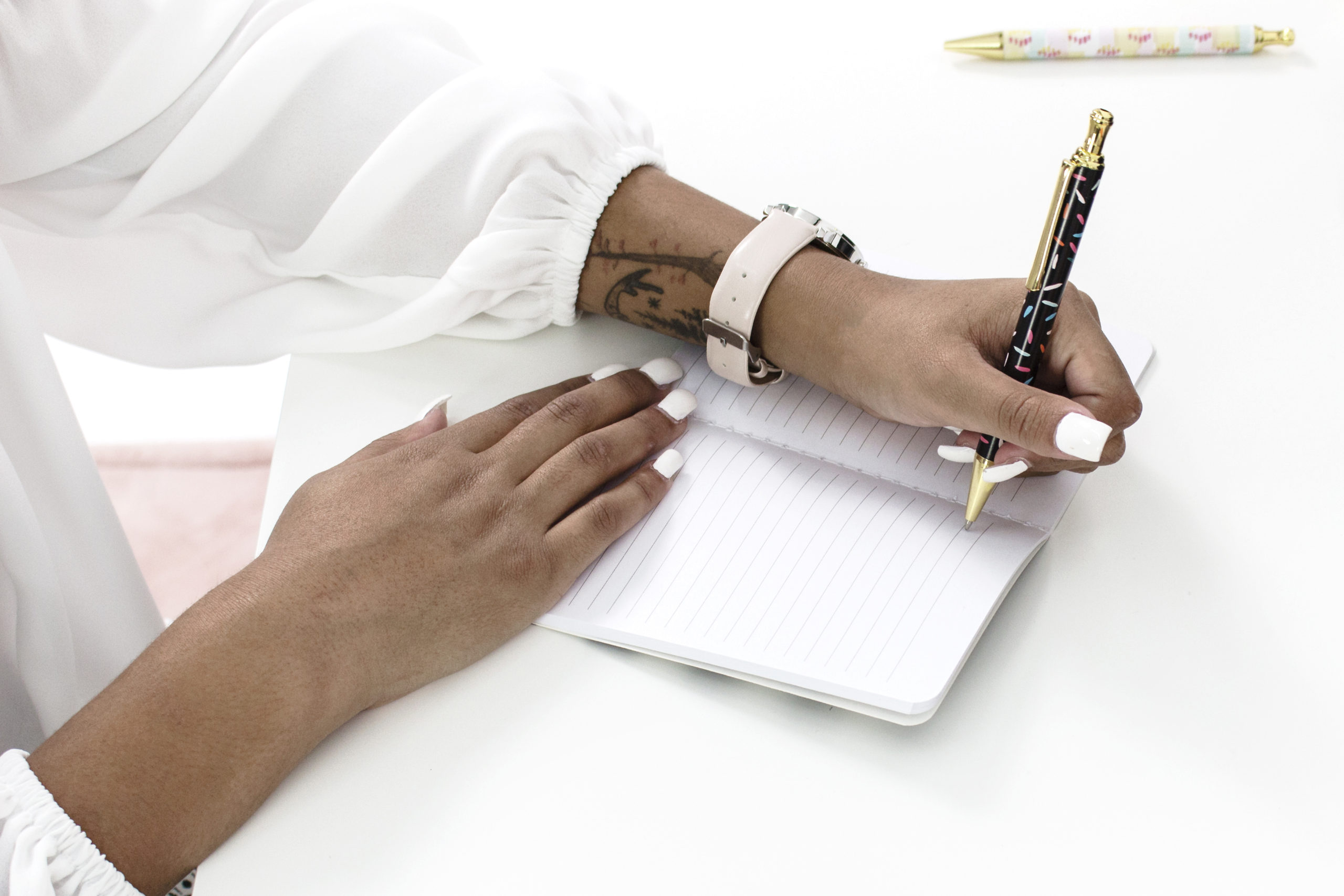
Once you determine your variable expenses and figured out your expense categories, you need to determine the amount you will spend for each budget category. You should already have a general idea of how much money you want to allocate to each spending category when you made your budget.
Now you have to break it down to how much money you want to “put in your envelopes.” In other words, you need to determine how much are your variable expenses in each expense category.
4. Record Your Spending
Once you’ve figured out how much you want to spend in each expense category, you need to start recording your spending. I personally recommend tracking your spending every day.
Print out multiple sheets of the FREE Daily Expense Tracker (one for each spending category or sub-category). Then put all your sheets in one place (like a binder or folder).
The way I use these daily expense trackers is I lodge expenses like you would do in a checkbook.
So for example, if I allow myself to spend $50 a month on a particular expense category, my beginning balance will be $50. Then, I deduct from that $50 as I spend—reducing my ending balance every time I spend. Once my ending balance is $0, I’m not allowed to spend anymore for the month.
You should track your spending every day. Write down what you spend as you go throughout your day. Make a note in your phone or on a small piece of paper of everything you spent that day. Then write the numbers in your expense tracker at the end of the day.
Another option is you can go online to your credit card, bank’s website, or a third party website like Personal Capital to see your spending for the day. You can then write down those transactions into your daily expense tracker. Remember to also keep track of any cash you may have spent since this will not be on your bank statements.
Once you reach your spending limit for a category, that’s it! Don’t borrow from other expense categories—just like you shouldn’t borrow from other cash envelopes.
5. Update Your Budget At The End Of The Month

Once you have recorded your spending for the month, plug in the numbers from your daily expense tracker into your monthly budget. Take a minute to sit down and compare the actual expenses versus what you had in your budget.
This will show you where you did well and where you may need to improve. If you find you quickly run out of money in one expense category, and have money left over in another category, consider making some adjustments in your budget.
You should not let a month pass without reviewing your budget.
Who Should NOT Use The Cashless Envelope System
I don’t recommend this method to anyone who:
- Lacks self-control when it comes to their spending;
- Does not pay off their credit card balance in full every month; or
- Doesn’t track their spending.
If any of those things sound like you, I would start using the cash envelope system first. Once you get into the habit of being more disciplined with your spending, then I would recommend giving the cashless envelope system a try.
Summary
In summary, I see the major benefits of using the cash envelope system, but spending cash isn’t for everybody. To use the cash envelope system without cash you need to do the following:
- First, you need to make a budget. Start out by using this FREE Monthly Budget Printable.
- Next, you need to determine your variable expenses and how much you want to spend in an expense category each month.
- Finally, you need to record your spending every day and update your budget at the end of the month. Grab this FREE Daily Expense Tracker and give this method a try!
Related Articles:
- How I Use My Monthly And Yearly Household Budget Spreadsheet
- Budget Organization Tools: The Ultimate Personal Finance Binder
- How To Budget A Variable Income: 3 Steps
If you want to remember this article, post it to your favorite Pinterest board.
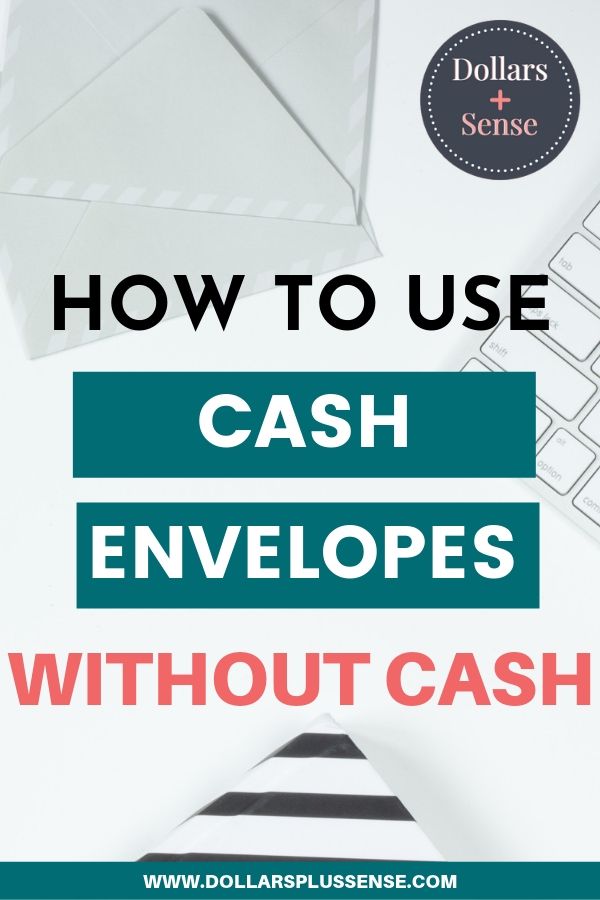
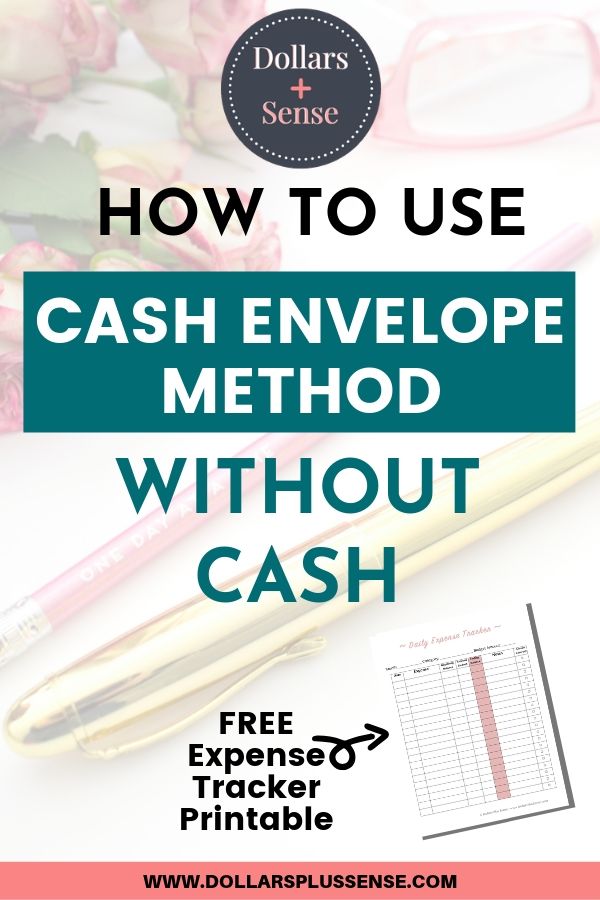



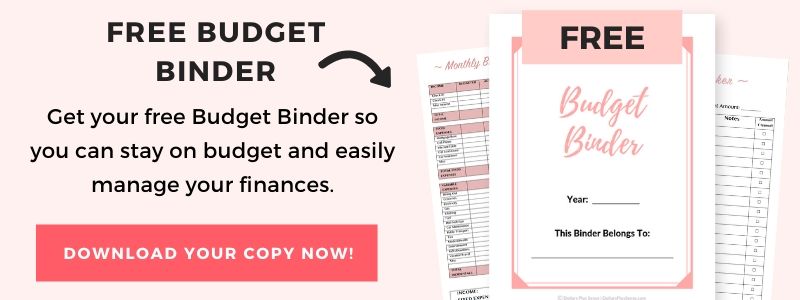
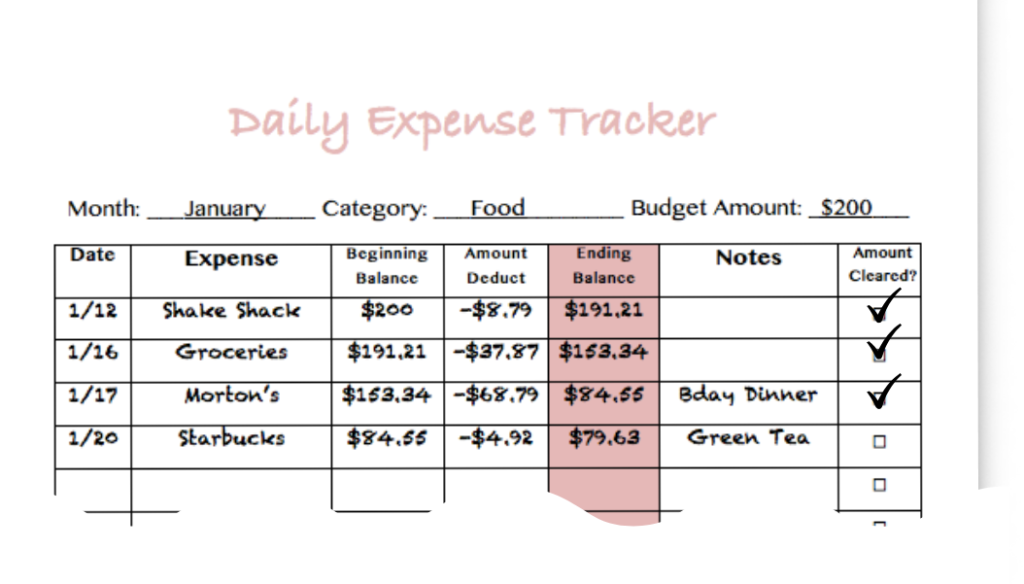
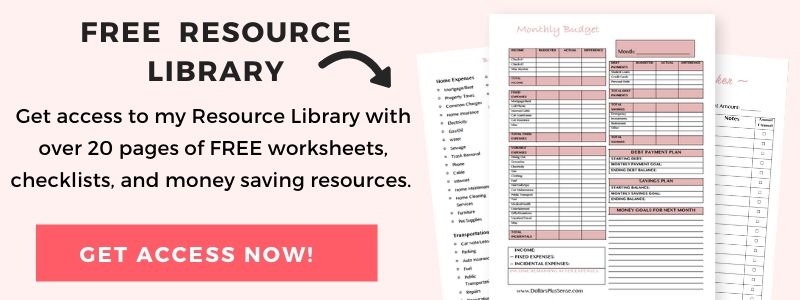


5 Comments on How To Use The Cash Envelope System Without Cash